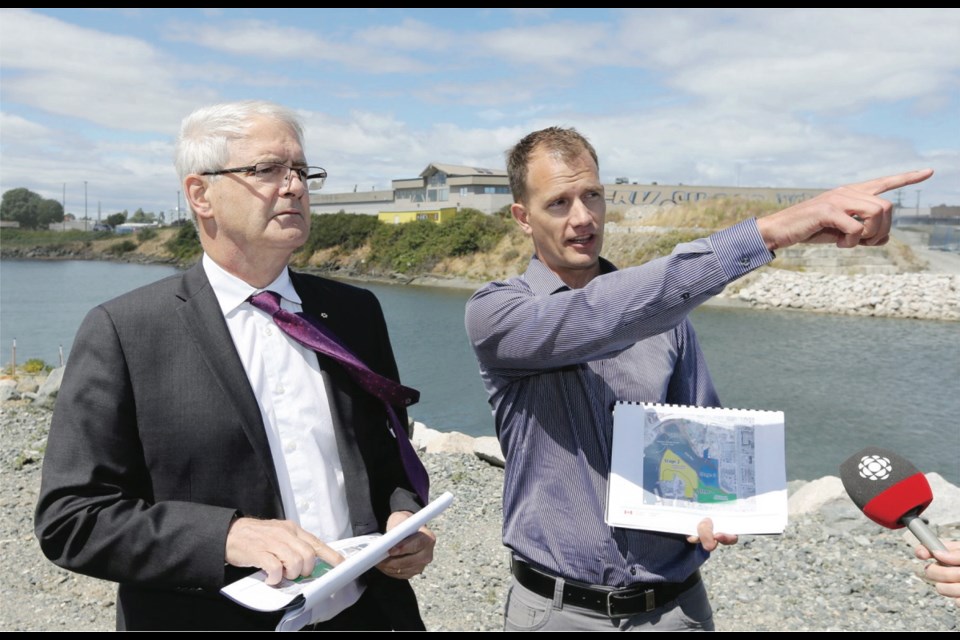One of British Columbia’s most contaminated sites, located on the edge of downtown Victoria, has been declared clean.
Transport Canada announced Monday that it had completed remediation work at Rock Bay.
“This is the culmination of about 13 years of work. It involved moving about 300,000 tonnes of soil,” Transport Minister Marc Garneau said.
About 4,800 dump truck loads — or 90,000 tonnes — of contaminated sediment have been removed since 2014 in the project’s final stage. Those dump trucks would stretch 30 kilometres, lined up end-to-end.
Rock Bay is the site of a former coal-gasification facility, operated from 1862 to 1949 by Victoria Gas and B.C. Electric.
The coal-gasification process — the main waste product being coal tar — had a significant impact on the soil, groundwater and harbour sediments. The facility and associated infilling contaminated the site with highly toxic and cancer-causing hydrocarbons, metals and other substances.
“This is part of our commitment over time to remediate a lot of sites across the country that came from a time when people dumped things where they wanted and where they could, without thinking about it,” Garneau said.
B.C. Hydro and Transport Canada, owners of the land that stretches along Government Street and Pembroke Street, have been working to remediate the toxic site since 2004.
Neither agency had any idea how bad the contamination was until work began. The original joint budget was about $32 million, which grew to $68 million within 10 years. Final costs haven’t been tallied yet, but Transport Canada said its portion is about $52.5 million. B.C. Hydro has paid for the rest.
B.C. Hydro continues to monitor its part of the property, which includes two historic buildings, but is still waiting on certificates of compliance from the Environment Ministry, said spokesman Ted Olynyk.
First Nations are buying the site, with talks continuing on what the price will be.
Esquimalt First Nation Chief Andy Thomas said there are no specific plans yet.
“We don’t have anything in mind right now, this is something new to us,” Thomas said.
Rock Bay was being considered to host a regional sewage-treatment plant, but was rejected. The Esquimalt nation has not received any other official commercial interest in the site, he said.
“Everyone’s been asking us, now that the sewage project fell apart, what are you going to do? We’re not going to give up, we’ll look at our options. We don’t know what those options are yet; the world is our oyster,” Thomas said.
Restoration and monitoring will be completed by January 2017.
Vegetation has been planted to restore the intertidal habitat and it’s hoped that wildlife returns to the area, including fish and crabs.
“A sea otter sunned itself on some equipment and a resident blue heron has been spotted in our planting beds, but we’re hoping the geese stay away so they have time to grow,” project lead Ian Chatwell said.
More than 200,000 tonnes of contaminated soil were removed during the first two phases of the project.
The third and final stage focused on the bay and surrounding foreshore. Shoring was installed along property boundaries to remove contamination up to eight metres deep. A temporary coffer dam was installed and the bay was drained. Two significant stormwater outfalls were temporarily diverted.



